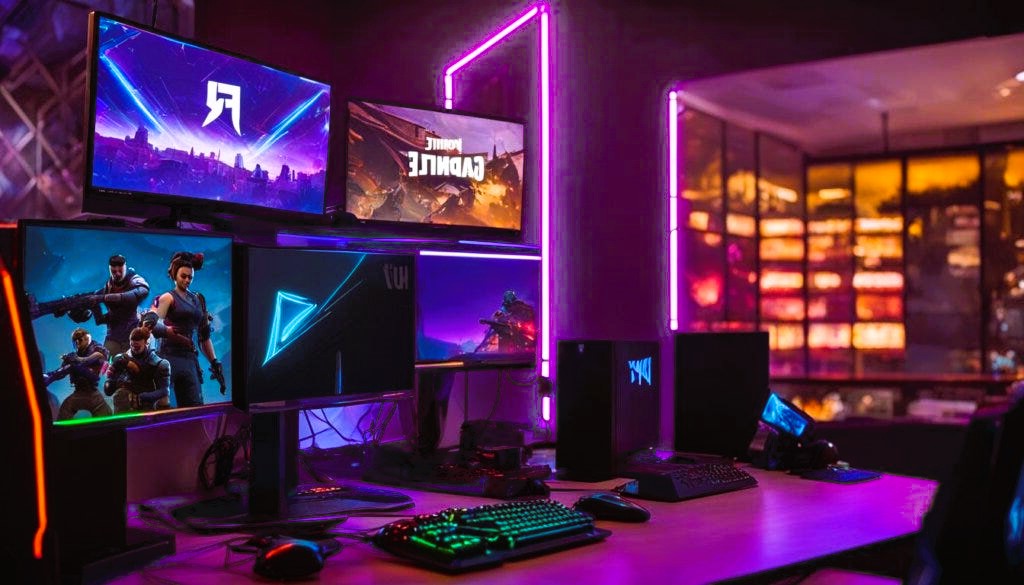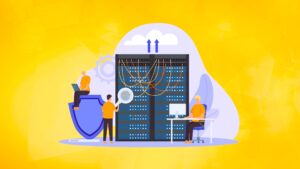When hosting a game server, one of the most critical aspects is its performance during periods of high traffic and peak times. Whether you run a small private server for friends or manage a large public server with thousands of players, optimizing your server to handle increased loads is essential for ensuring a smooth gaming experience. This article will explore various strategies and best practices for optimizing your game server, ensuring it can handle high traffic efficiently.
Understanding Server Performance
Before diving into optimization techniques, it’s essential to understand what affects game server performance. Factors such as bandwidth, CPU usage, memory allocation, and disk speed can significantly impact how well your server performs under pressure.
- Bandwidth: This refers to the amount of data that can be transmitted over your internet connection. If your server lacks sufficient bandwidth, players may experience lag or disconnections during peak times.
- CPU Usage: The server’s CPU is responsible for processing game logic and player actions. High CPU usage can lead to slowdowns and affect the overall responsiveness of the game.
- Memory Allocation: Sufficient RAM is crucial for a game server to run smoothly. If your server runs out of memory, it may crash or become unresponsive.
- Disk Speed: The speed of your storage solution can affect how quickly data is read and written. Using SSDs instead of traditional HDDs can significantly improve server performance.
By understanding these factors, you can better optimize your game server to handle high traffic.
1. Choose the Right Hosting Solution

The first step in optimizing your game server is selecting the right hosting solution. There are three primary types of hosting: shared, VPS (Virtual Private Server), and dedicated. For a game server, a dedicated or VPS hosting solution is often best, as these options provide more resources and greater control over server configuration.
Dedicated Servers
Dedicated servers offer the most power and control. You have exclusive access to the entire server, allowing you to customize it to your needs. This option is ideal for large gaming communities that experience high traffic.
VPS Hosting
VPS hosting provides a middle ground between shared and dedicated servers. While you still share physical hardware with other users, you have your own allocated resources. This option is suitable for medium-sized gaming communities looking for more control without the cost of a dedicated server.
2. Optimize Server Configuration
Once you have selected a hosting solution, the next step is to optimize your server configuration. Here are some key areas to focus on:
a. Server Location
Choose a server location that is geographically closer to your player base. This reduces latency and improves response times. For example, if most of your players are in North America, hosting your server on the east coast can provide a better experience. How to monetize your game server, read our ideas and strategies.
b. Network Settings
Optimizing network settings can help reduce latency and improve performance. Here are some adjustments you can make:
- Adjust Packet Size: Tweaking the packet size can help optimize how data is sent between the server and clients. A larger packet size can reduce the number of packets sent, but it may increase latency.
- Use Quality of Service (QoS): Implementing QoS settings on your router can prioritize game traffic, ensuring that gameplay remains smooth even when other applications are using bandwidth.
c. Server-Side Optimization
Consider optimizing your game server’s settings. For instance:
- Limit Player Slots: While it may be tempting to increase player slots to accommodate more users, doing so can overload the server. Monitor performance and adjust player limits accordingly.
- Disable Unnecessary Plugins: If you are using mods or plugins, disable any that are not essential. Each plugin can consume server resources, and reducing their number can improve performance.
3. Implement Load Balancing
For larger gaming communities, implementing load balancing can help distribute traffic across multiple servers. Load balancing allows you to spread the load evenly, ensuring that no single server becomes overwhelmed. Here are some benefits:
- Improved Performance: By distributing traffic, players experience reduced latency and faster load times.
- Increased Redundancy: If one server goes down, others can take over, ensuring continued access for players.
4. Monitor Server Performance
Monitoring server performance is crucial to identifying issues before they become critical. Utilize server monitoring tools to keep track of key performance indicators, such as:
- CPU and Memory Usage: Regularly check CPU and memory usage to identify any spikes that may indicate problems.
- Player Connections: Monitor the number of active players to understand peak times and prepare accordingly.
- Network Latency: Keep an eye on network latency and packet loss to ensure a smooth gaming experience.
5. Use Content Delivery Networks (CDNs)

A Content Delivery Network (CDN) can help optimize game server performance, especially for servers that deliver large amounts of data, such as texture packs or game updates. CDNs store copies of your game data in multiple locations worldwide, reducing the distance data must travel and improving load times for players.
6. Optimize Database Performance
For games that rely heavily on databases, optimizing your database performance is crucial. Here are some strategies:
- Use Efficient Queries: Ensure your database queries are optimized for speed. This may involve indexing tables, avoiding unnecessary joins, and selecting only the data you need.
- Implement Caching: Utilize caching mechanisms to store frequently accessed data, reducing the load on your database and improving response times.
Optimizing your game server for high traffic and peak times is an ongoing process that requires attention and adjustment. By choosing the right hosting solution, optimizing server configurations, implementing load balancing, monitoring performance, utilizing CDNs, and optimizing database performance, you can create a seamless gaming experience for your players.
For further reading on server optimization standards and best practices, consider visiting Wikipedia’s Guide on Game Server Optimization.
By investing time and resources into server optimization, you’ll not only improve player satisfaction but also foster a loyal gaming community that can grow and thrive.






